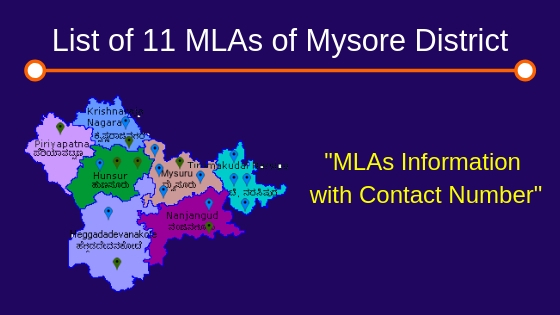GI Tag of Mysore: Do you know Mysore has got 18 Geographical Indication Tag by 2019, in which special items have been included in the list. If you have ever thought about what is Mysore is Famous for and search online for the same,
Then you are good to be here because I’ve listed all 18 specialties which bring GI Tag to Mysore, read till the end and share your thought on Heritage City Mysore.
01. Nanjangud Banana
The first in the list of 18 GI tag of Mysore is Nanjanagud Banana also called as Nanjangud Rasabalehannu, is famous and well known for its unique taste and feel, usually grown in Mysore district, Nanjangud and Chamarajanagara District.
02. Mysore Mallige
Mysore Mallige refers to the Jasmine flower grown in the region of Mysore and also in some part of Srirangapatna of Mandya district which is called the ‘queen of flowers’ because of its powerful fragrance than any other jasmine flower.
This flower was honored and used by Wadeyar of Mysore Kingdom and also use to decorate the Mysore Palace in time of Dasara festival.
03. Mysore Betel leaf
The third most important GI Tag of Mysore is Mysore Betel leaf which is heart-shaped Betel leaf specially grown in the Mysore region traditionally offered to elder people on occasion wedding to get their blessing, usually, it is offered Areca nut (Adike) on top of this betel leaf.
04 & 05. Mysore Silk and Its Logo
The fourth most important GI Tag of Mysore is Mysore Silk, Karnataka produces 9,000 metric tons of mulberry silk of a total of 20,000 metric tons of mulberry silk produced in the country, thus contributing to nearly 45% of the country’s total mulberry silk. In Karnataka, silk is mainly produced in the Mysore district. It’s a patent registered product under KSIC. KSIC is an owner of the all Mysore Silk brand.
06 & 07 Mysore Agarbathi and its Logo
The fifth most important GI Tag of Mysore is Mysore Agarbathi, is a variety of incense sticks manufactured at Mysore using locally grown ingredients which were found only in the state of Karnataka before. This incense has been awarded a Geographical Indication tag from the Government of India in 2005 due to its historic background and remote availability of material used
08. Mysore Rosewood Inlay
Mysore Rosewood Inlay covers a range of techniques used by artisans in around the area of Mysore in sculpture and the decorative for inserting pieces of contrasting, often colored materials like ivory shells, mother-of-pearl, horn and sandalwood into depressions in a rosewood object to form ornament or pictures that normally are flush with the matrix.
Also, read Top 8 Special Events in Mysuru Dasara 2019
09. Mysore Sandalwood Oil
Mysore Sandalwood Oil is a perfume oil extracted from sandalwood (Santalum album), known as a “royal tree”, in the Mysore district of Karnataka, India. The tree species grown is stated to be one of the best varieties in the world
10. Mysore Sandal Soap
Mysore Sandal Soap is a brand of soap manufactured by the Karnataka Soaps and Detergents Limited (KSDL), a company owned by the government of Karnataka in India. This soap has been manufactured since 1916, when Krishna Raja Wadiyar IV, the king of Mysore, set up the Government Soap Factory in Bangalore. The main motivation for setting up the factory was the excessive sandalwood reserves that the Mysore Kingdom had, which could not be exported to Europe because of the First World War.
11. Mysore Traditional Paintings
Mysore painting is an important form of classical South Indian painting that originated in and around the town of Mysore in Karnataka encouraged and nurtured by the Mysore rulers. Painting in Karnataka has a long and illustrious history, tracing its origins back to the Ajanta times (2nd century B.C. to 7th century A.D.)
12 & 13. Ganjifa Cards and Its Logo
Ganjifa, Ganjapa or Gânjaphâ, is a card game or type of playing cards that are most associated with Persia and India. After Ganjifa cards fell out of use in Iran before the twentieth century, India became the last country to produce them. The form prevalent in Odisha is Ganjapa.
14. Coorg Orange
In the 1960s, Coorg orange was grown inland of 24,000-hectare area. In recent years the cultivation area has come down to less than 2,000 hectares. Coorg orange was mainly cultivated in the districts of Kodagu, Hassan and Chikmagalur as a secondary crop in coffee plantations for more than 150 years
15. Channapattana Dolls
Channapatna toys are a particular form of wooden toys (and dolls) that are manufactured in the town of Channapatna in the Ramanagara district of Karnataka state, India. This traditional craft is protected as a geographical indication (GI) under the World Trade Organization, administered by the Government of Karnataka.
16. Coorg Green Cardamom
Coorg Green Cardamom is a green variety of Cardamom grown in Coorg, Karnataka. which received Intellectual Property Rights Protection or Geographical Indication (GI) status.
17. Coorg Arabica Coffee
Coffee cultivation is an integral part of the lives of the people of Kodagu district and forms the backbone of the economy of the district till today……the district has a unique biotic and abiotic condition which provides uniqueness to the Coffee grown in it.
18. Mysore Pak
Mysore Pak is an Indian sweet prepared in ghee that is popular in Southern India. It originated in the Indian state of Karnataka. It is made of generous amounts of ghee, sugar, gram flour, and often cardamom. The texture of this sweet is similar to fudge
This is all you need to know about the GI tag of Mysore 2019 and I hope you will like and share this information with all Mysorean who in need of GI tag of Mysore. Don’t forget to share this website with your friends circle Thanks for Reading





